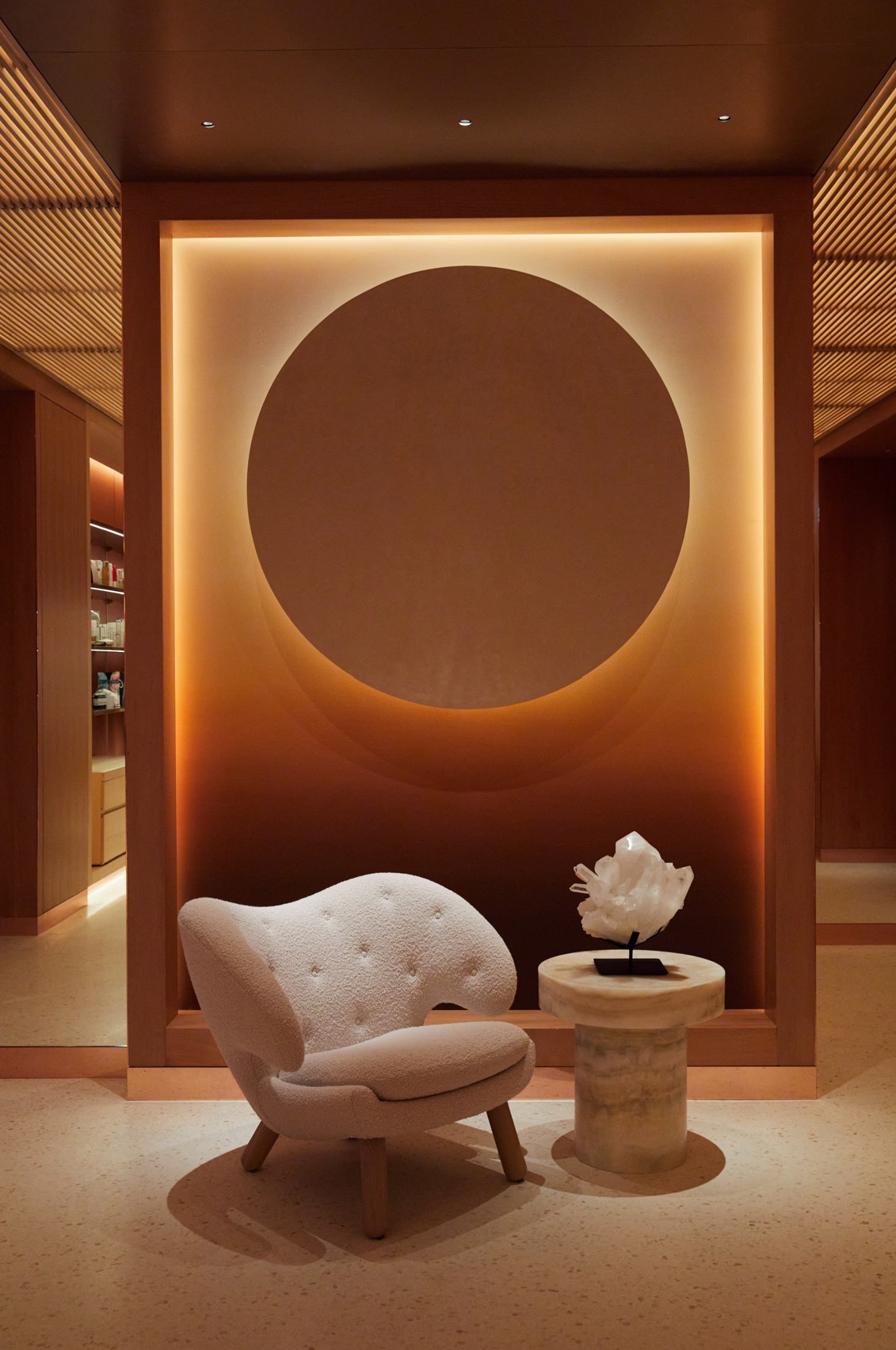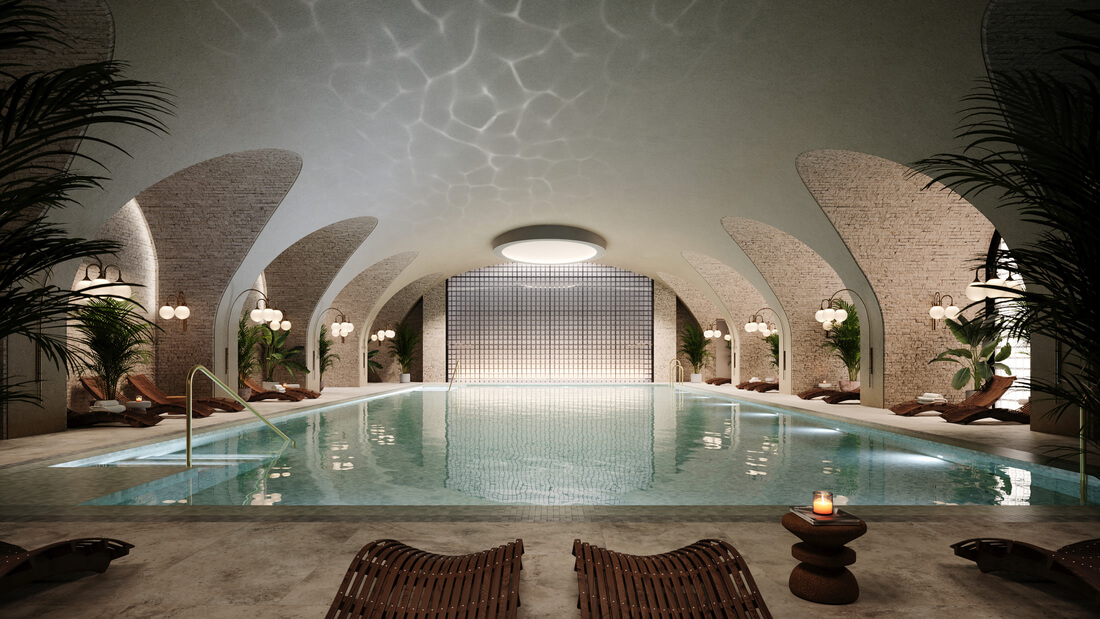Health centred
Wellness at home used to mean a small gym and maybe a sauna in the basement. Not any more. The desire to live healthier for longer is creating a new wave of projects with cutting-edge wellness tech, treatments and rituals at their heart
6 minutes to read
What does the future of wellness look like? Sand, scrub and the quiet sway of leaves as the Gulf breeze drifts through tamarisk trees, apparently. At AlJurf, a stretch of protected coastline halfway between Dubai and Abu Dhabi, architects and construction crews are carving out the foundations of what will become SHA Emirates – a place where luxury and longevity are set to converge.
The vision is quietly radical: a sanctuary where homes are designed for a longer and healthier life. Opening in 2027, SHA Emirates, in keeping with its existing wellness resorts and residencies in Mexico and Spain, promises biophilic design, sea breeze-cooled villas and a holistic wellness community grounded in science, spirituality and sunlight.
Welcome to a new era of health-first living which, like the very sands of AlJurf, is quietly shifting. Where once the measure of a prime residence might have been its postcode or its Picasso-worthy proportions, today’s discerning homeowner wants something more than just a Technogym Kinesis in the basement. “The game has changed,” says Anna Bjurstam, Global Wellness Pioneer at Six Senses. “Wellness is no longer a luxury or an escape – it’s a non-negotiable. People are realising that investing in their health is just as vital as investing in prime property.”
It’s an investment that is now rooted in hard science and even harder real estate. In an increasingly competitive market, evidence from the Global Wellness Institute confirms that wellness features are becoming a key differentiator for developers. Much of the expansion in the sector has happened since the pandemic, with our data confirming that wellness-oriented real estate projects have nearly tripled since 2017.
From London to the UAE, as wellness has moved in, it has brought with it an entourage of longevity experts, exercise gurus, functional medicine physicians and red-light therapy pods. In the context of this new architecture for wellbeing – one in which community is as important as equipment – what used to be high-end amenities, like a pool or a sauna, are now baseline expectations. SHA’s latest proposition isn’t just about a creating a property that looks good – it must also support your microbiome, protect your circadian rhythm and offer diagnostic testing before breakfast. In short: homes must now heal.
It’s a concept that’s not limited to islands in the sun, either. At Surrenne – Maybourne’s ambitious wellness concept nestled beneath the 61 suites at The Emory in London, and set to be rolled out at the forthcoming Maybourne Saint-Germain in Paris – Hattie David-Wilkinson, the group’s Global Head of Wellness, describes the new approach as a kind of sensory choreography.
“It’s about anticipating what you need before you know you need it,” she says. At Surrenne that might mean magnesium in the minibar after a long-haul flight, or an infrared blanket drawn across your bed for optimal recovery. There’s even a device on offer – Exomind – that targets brain stimulation via magnetic pulse and enhances mental wellness, with 90% of those who tried it noting their emotional regulation was improved.

Well smart Surenne’s reception
Better together
A 15-minute cycle ride away from The Emory, across Hyde Park, is Six Senses’ forthcoming London outpost at The Whiteley. This will house a clinic focused on longevity and hormonal health, as well as a so-called “biohacking park”. Softened by good design and a sense of place, or “architectural empathy”, as Bjurstam calls it, the space will be designed to understand your biology better than you do, answering demand from an ever more wellness-aware clientele.
Bjurstam describes it as a “living, breathing community”, with access to smart wellness tech, community rituals and spaces that soothe the nervous system in the midst Of city chaos. Long overlooked in high-end real estate, community is the difference between a spa being used, and it quickly becoming the place that gym equipment goes to die.
Jamie Caring, who has helped shape more than 30 member-centric ventures via his consultancy, Sevengage, believes that wellness without connection is pointless. To confirm the point, Caring is working on a project with a 40-person sauna designed to host ticketed events. “The most effective spaces are communal,” he notes. “The 8pm sauna socials, the quiet camaraderie of repeated rituals – that’s what makes wellness stick.”
There’s a financial logic here, too. Spas don’t pay for themselves. By offering public membership alongside private access, residences like the 55-acre Long Lane in West Sussex – one of the projects Caring is currently working on, now under development by founders Harrison Hide, a former Wall Street financier, and restaurateur Louie Blake, and set to open in 2026 – are creating vibrant ecosystems. “Dead wellness spaces don’t work,” he says. “You need the vibe.”

A slice of haven Six Senses London
Live long and prosper
It’s this members’ club culture that promises to elevate these residences into thriving longevity centres. Six Senses Place, the brand’s new members-only concept, is equal parts health haven and social salon. Think biomarker testing before brunch and book clubs after breathwork, all backed by sustainable wellness tools that enable its members to incorporate wellness into their lives every single day.
“Residents at The Whiteley aren’t running from city life,” Bjurstam explains. “They want to thrive in it.” Surrenne’s David-Wilkinson agrees. “Apartment blocks are run almost like hotels these days, but if you have a sense of community within that apartment block, it motivates you in different ways, and you’re more likely to show up to your workout. There is accountability there.”
Membership, community and sauna socials might also be the type of development that offers the most architectural longevity. Chris Sanderson, co-founder of The Future Laboratory, sees a shift not just in the design of residences, but in their purpose. “We’re seeing new models emerge for the 50+ cohort,” he says, referencing the likes of The Embassies – an international network of premium intergenerational club-like homes founded by CEO Jan Garde on the principles of “longevity, wellness and vibrant ageing”. “The biggest growth opportunity lies at the intersection of ageing well and living well.”
With more of us investing in our health, the lines between clinic, club and home are blurring. At SHA, they call their residences “daily pathways to vitality”. At Surrenne, wellness is reimagined through scent, sound and texture. Even a swim in the pool becomes a transforming experience the moment you dip your head under the water and discover the soothing soundtrack to your swim coming through the underwater speakers.
Perhaps real luxury now isn’t a sprawling penthouse or a private screening room but waking up rested, with your cortisol levels in check and a community of friends and neighbours close by who you enjoy working out with. “Creating something that feels both personal and universal – that’s where the magic lives,” says Bjurstam. The new blueprint for living well is part science, part soul – and, finally, part home.